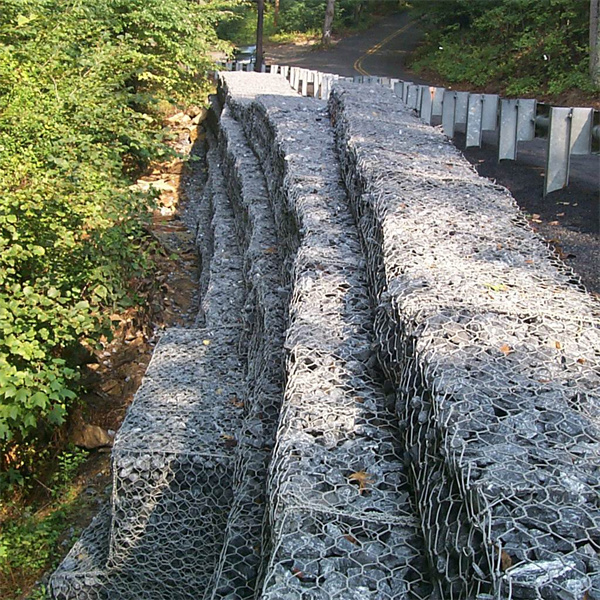Nov . 17, 2024 01:07 Back to list
china gabion garden bed
The Beauty and Versatility of China Gabion Garden Beds
As urban gardening becomes increasingly popular, many people are seeking innovative solutions to enhance their green spaces. One such solution gaining traction is the use of gabion garden beds. Originating from the traditional use of gabions in civil engineering, these sturdy wire containers filled with materials like stones, gravel, or soil have found their place in modern landscaping, especially in gardens across China.
What are Gabion Garden Beds?
Gabion garden beds are essentially wire mesh cages that are filled with rocks or soil. They form a solid structure that can be used to create elevated planting beds, decorative borders, or even retaining walls. The use of gabions allows for creative and functional garden designs that can withstand the elements while providing a rustic aesthetic.
One of the key appeals of gabion garden beds is their versatility. They can be used in various gardening styles, from contemporary to more traditional designs. The wire mesh can be customized in size, shape, and color, allowing gardeners to match the appearance of the beds with their overall landscaping theme.
Benefits of Gabion Garden Beds
1. Durability Gabion beds are incredibly durable. The wire mesh is designed to withstand weathering and corrosion, making them a long-lasting addition to any garden. This resilience is particularly beneficial in regions with harsh weather conditions.
2. Sustainability Using natural materials like stones or recycled gravel in gabion beds makes them an eco-friendly option for gardening. Not only do they utilize locally sourced materials, but they also contribute to drainage and soil health.
3. Drainage Gabion structures offer excellent drainage. The gaps in the wire mesh allow water to flow freely, reducing the likelihood of waterlogging and ensuring that plants receive adequate moisture without becoming over-saturated.
4. Soil Retention For those gardening in hilly or uneven areas, gabion beds can serve as effective retaining walls. They prevent soil erosion while providing a stable foundation for planting.
5. Aesthetic Appeal The unique texture and appearance of gabion beds add a striking visual element to gardens. They can be filled with colorful stones or left with a more natural look, allowing gardeners to express their creativity.
china gabion garden bed

6. Easy to Maintain Gabion garden beds require minimal maintenance compared to traditional wooden or concrete beds. The materials used in the construction are resistant to decay, and the structure itself can last for years with little intervention.
How to Create a Gabion Garden Bed
Creating a gabion garden bed is a straightforward process. Here are the steps involved
1. Select the Location Choose a spot in your garden that receives adequate sunlight and has good drainage.
2. Design Your Bed Determine the size and shape of your container. Gabion beds can be rectangular, square, or even circular, depending on your design preferences.
3. Gather Materials Purchase or gather wire mesh, stones, and soil. Ensure that the wire mesh is robust and treated to resist corrosion.
4. Assemble the Gabion Construct the frame using the wire mesh, securing the corners and edges. Make sure it’s stable and well-structured.
5. Fill with Stones/Soil Begin filling the gabion with your chosen materials. Layering stones or soil can create visual interest and provide a habitat for beneficial insects.
6. Plant Your Garden Finally, add your choice of plants or flowers. The raised bed provides excellent access for tending to your garden while helping to showcase your plants beautifully.
Conclusion
As gardeners continue to look for sustainable and versatile planting solutions, gabion garden beds stand out as an excellent choice. Their durability, aesthetic appeal, and practicality make them an ideal addition to any garden, especially in urban settings. Whether you're a seasoned gardener or just starting, consider gabion garden beds to elevate your gardening experience and create a stunning green space.
-
Visualizing Gabion 3D Integration in Urban Landscapes with Rendering
NewsJul.23,2025
-
The Design and Sustainability of Gabion Wire Mesh Panels
NewsJul.23,2025
-
The Acoustic Performance of Gabion Sound Barriers in Urban Environments
NewsJul.23,2025
-
Mastering the Installation of Galvanized Gabion Structures
NewsJul.23,2025
-
Gabion Boxes: Pioneering Sustainable Infrastructure Across the Globe
NewsJul.23,2025
-
Custom PVC Coated Gabion Boxes for Aesthetic Excellence
NewsJul.23,2025
-
Installation Tips for Gabion Wire Baskets in Erosion Control Projects
NewsJul.21,2025






